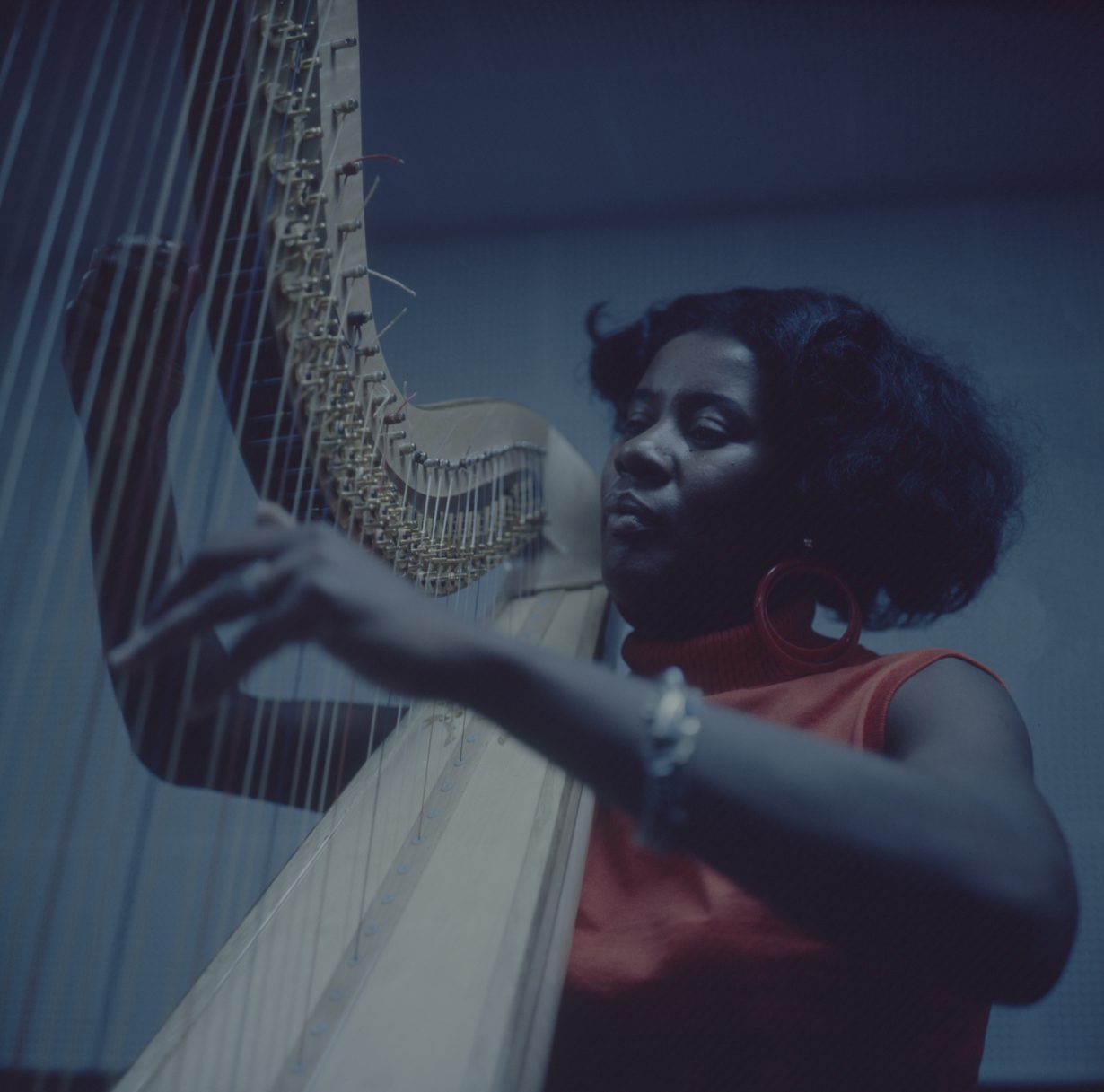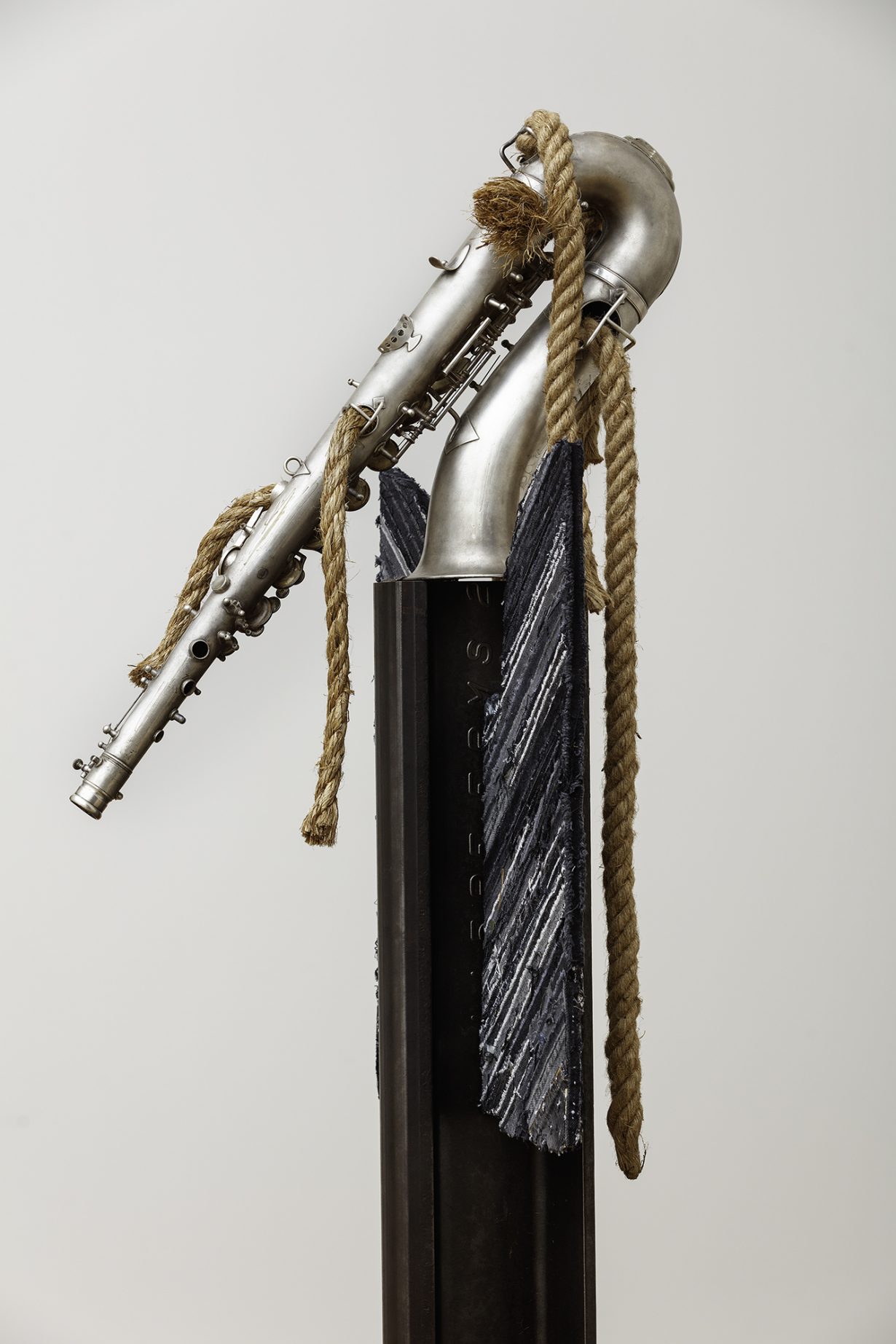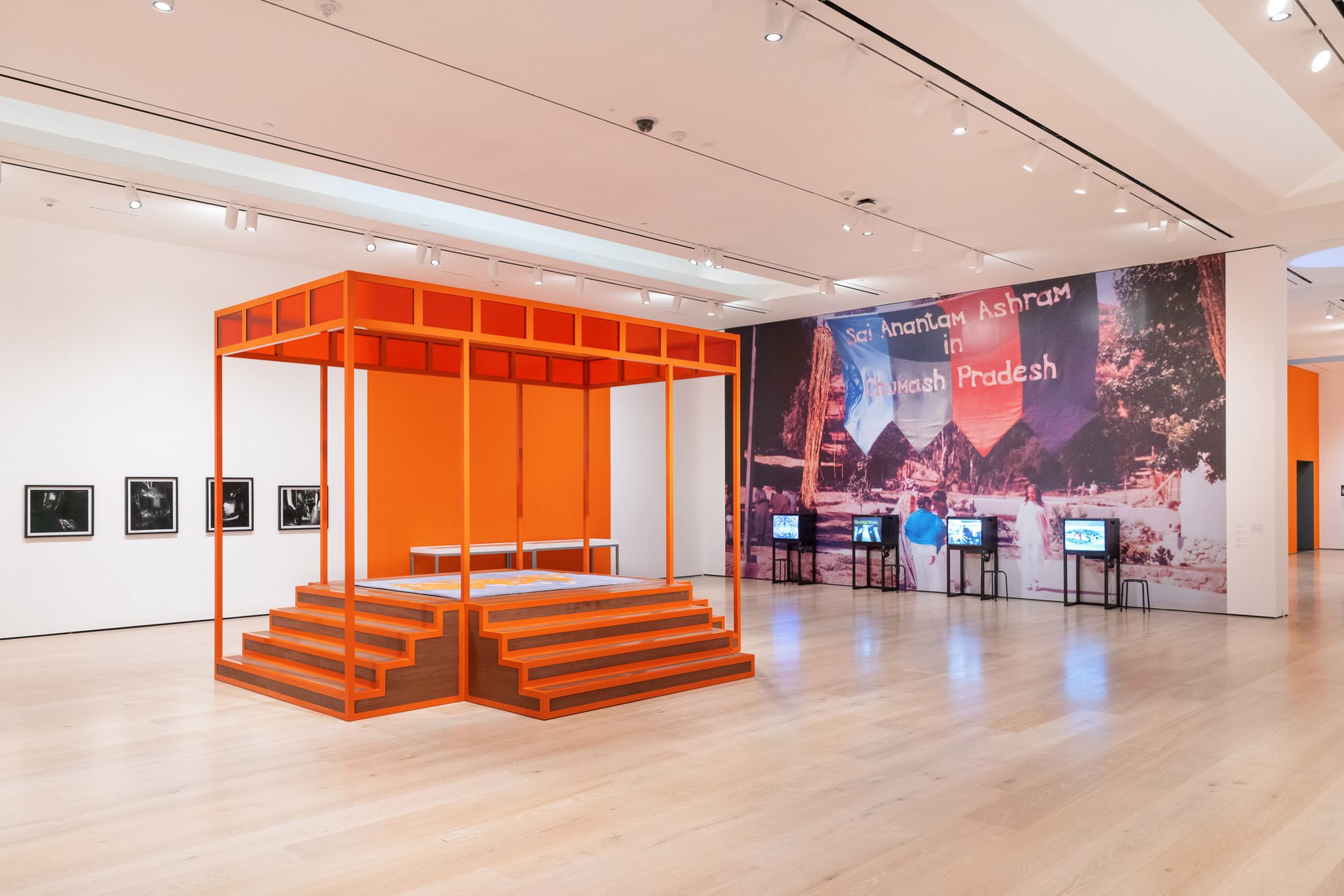An exhibition at the Hammer Museum, Los Angeles captures Alice’s irreducible life and influence on generations of contemporary artists
A failure of ‘branding’ is often invoked in relation to the late Alice Coltrane. Descriptions of the instrumentalist and composer tend to fall elliptically into the gravitational force of her husband, jazz saxophonist and bandleader John Coltrane. But Coltrane’s life before and after John was equally rich. In the years following her husband’s premature death, Coltrane emphasised her role as musician and mother, and later as a vessel through which the light of a Supreme One flowed as sound; Turiyasangitananda, as she named herself – ‘the Lord’s highest song of bliss’.
Monument Eternal captures Coltrane’s irreducible life in archival materials, photographs, film documentation and audio recordings. There are many visions of Coltrane mirrored across the exhibition’s sections, each with its kernel of truth: ‘Sonic Innovation’ describes her early years performing bebop and jazz in Detroit, Paris and New York; ‘Spiritual Transcendence’ charts her turn towards Vedic faith; ‘Architectural Intimacy’ bridges these periods, honouring her ability to create radical communities. Importantly, the exhibition considers her through the eyes of a younger generation, presenting homages, many newly commissioned, by 19 contemporary artists, including Martine Syms, Steven Ellison (aka Flying Lotus) and Jamal Cyrus.

Of these, works by Ephraim Asili, GeoVanna Gonzalez and Jasper Marsalis betray tensions that underwrite the exhibition’s commemorative intentions. Reenacting Coltrane’s early harp experiments, Asili’s film Isis & Osiris (2024) is a dialogue and performance session with harpist Brandee Younger, who describes Coltrane’s influence on her between shots of musical improvisation. In the recording studio, Younger’s fingers pluck out a meditative cycle of notes, filmed by fixed and moving cameras as a third eye, a giant mirror, moves along an additional track. In side-by-side 16mm shots, Younger doubles and occasionally quadruples, much like Coltrane, whose image punctuates the exhibition in wall-scale photographs and endless contact sheets. Watching Asili’s film, the viewer struggles to parse the reflected image from its source, prompting questions about cultural inheritance as Younger sits at Coltrane’s gilded Lyon & Healy harp.

If, in Asili’s film, reinventions of Coltrane proliferate, in Gonzalez’s and Marsalis’s works she is starkly absent. Gonzalez’s sculpture-cum-performance platform Beneath the Sun, Lies the Wisdom Eye (2024) gleams a vibrant orange, a colour that in Vedic tradition represents purity and was worn by Coltrane from 1976 onwards. Stairs ascend to the dais on four sides, evoking Coltrane’s mantra ‘Roads are many, the destination one’. As with Gonzalez’s sculpture, Marsalis’s Performer (2025) weaves a relationship with Coltrane’s body, draping an orange sari over a mic stand such that the fabric suggests a human shape. The show splits itself along the lines defined by these three works: on one hand taking Coltrane’s life and work as raw material; on the other, emphasising absence.
The Hammer’s portrait of Coltrane highlights the elusive nature of memorial. In Monument Eternal, Coltrane is a divine icon, subsumed by a sea of other voices. The show does not deepen our understanding of Coltrane. Rather, the commissioned artists engage her memory in deeply personal encounters. In Shala Miller’s Heavenly Father series (2024), black-and-white photographs of prismatic mirrors and nighttime shadows, the photographer blurs their own relationship with their father’s spirit and Coltrane’s visitations by her deceased husband. Nonetheless, these subjective reflections reveal what Coltrane symbolises to artists working today – vanguardism, mythic tragedy and Black struggle for utopia. In some sense, this polyphonic treatment of Coltrane is apropos. In music, as in life, her goal was to become part of a larger consciousness, to dissipate selflessly into a universal unknown.
Alice Coltrane, Monument Eternal at Hammer Museum, Los Angeles, through 4 May
From the April 2025 issue of ArtReview – get your copy.
